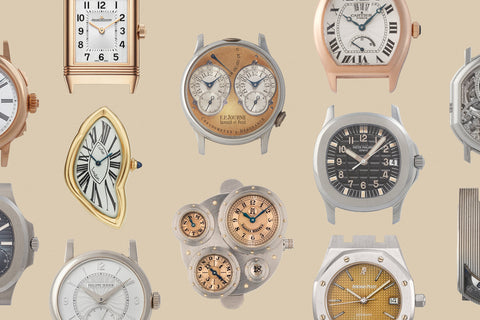Part of the well-loved Collection Privée Cartier Paris, this Tank Monopoussoir is a piece with an intriguing combination of geometrical shapes. It is powered by the calibre 045MC, a creation of THA ébauche, a movement manufacture that was co-founded by F.P. Journe and played a pivotal role in the early careers of independent watchmakers Denis Flageollet and Vianney Halter.
You May Also Like
The Core Principles of CPCP
So, what did the Collection Privée Cartier Paris stand for? Digging into its rich archives, the jeweller recreated some of its most iconic pieces, many of which had been ignored for several decades.
This spanned from their more classic designs – such as the Tank or Santos – to more obscure ones, such as their Tank Monopoussoir Chronograph, which was first produced as a unique piece in 1935. Due to the prolific output of the early Cartier workshops, there was plenty to build on for the collection.
There’s no exact figure for how many different models were produced, but we were able to find at least eight different executions of the Tortue, which gives you a sense how many different expressions were imagined.
Many of the designs that were called-upon by Cartier were also given a subtly more modern touch. The Tortue Monopoussoir was released with a range of different dial configurations, including a distinctively more contemporary one, with blue accents, oversized numerals and an unusual placement of the Cartier signature. Some of these watches were also scaled up, in order to match the tastes of consumers of the time. For example, when the Cloche was recreated in 2006, it was about 15% larger than the original from 1922.
Beyond its dedication to recreating iconic designs, the Collection Privée also displayed a renewed focus on what lay behind the caseback. Having long relied on quartz technology sourced externally, Cartier did not possess the watchmaking know-how or facilities to create high-quality movements. As such, they relied on a range of specialised manufacturers, who supplied the French jeweller with manual-winding, time-only calibres, whilst also helping them develop a range of complications, from jump hours to monopusher chronographs. Though the idea of in-house watchmaking has gained traction in recent times, relying on external suppliers has long been the favoured approach for those looking for high-quality movements. Until recently, even Patek Philippe and Vacheron Constantin still used a Lemania 2310 base for their chronographs.




















































































































































































































